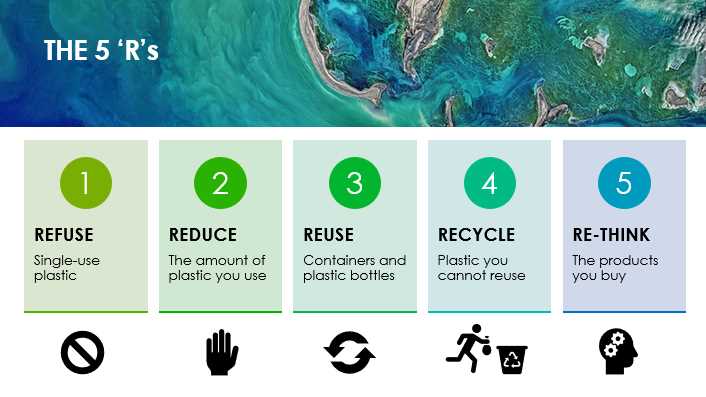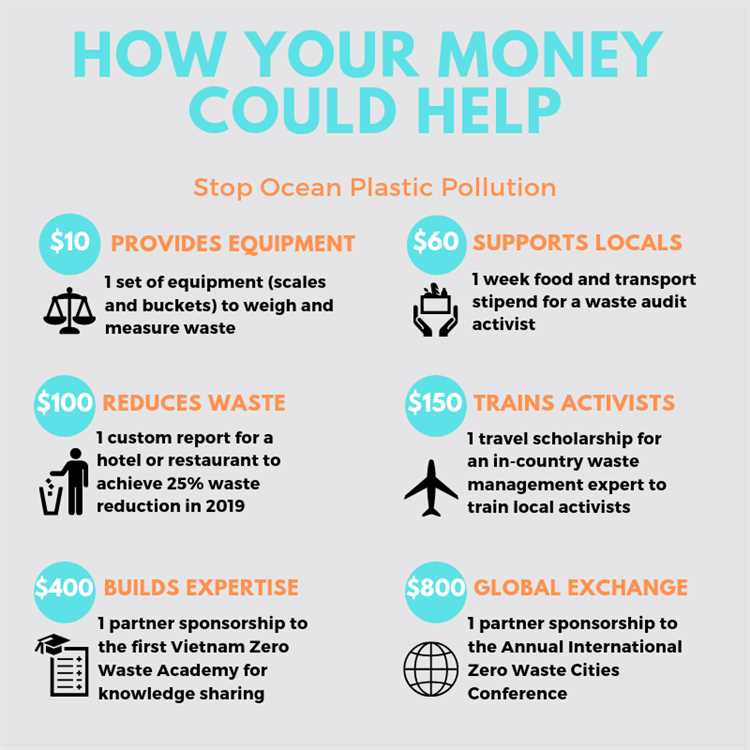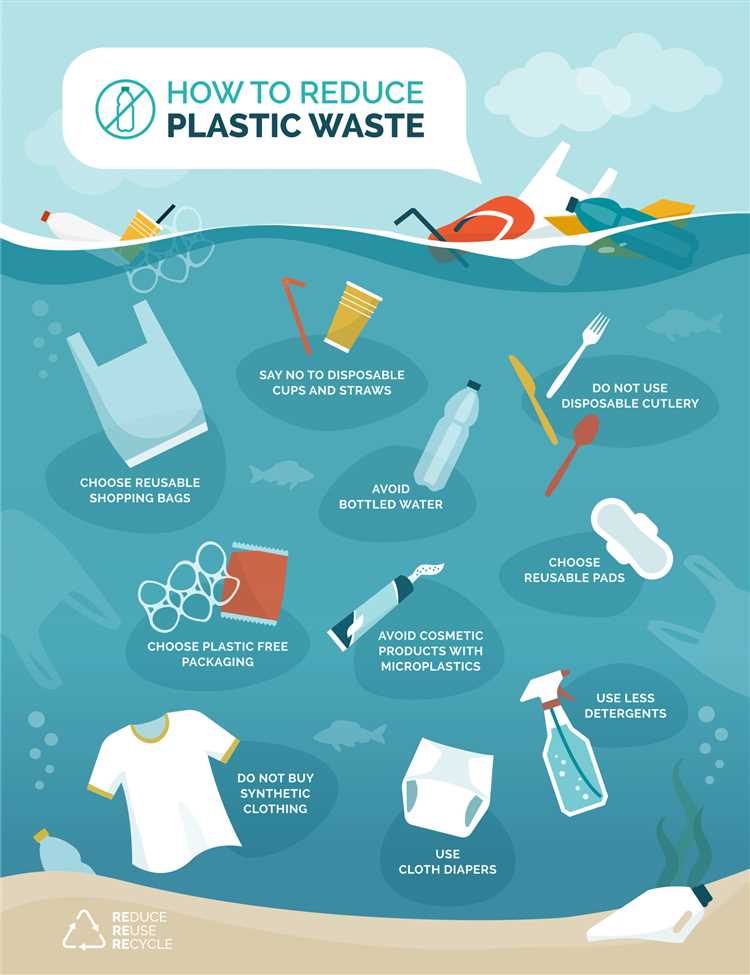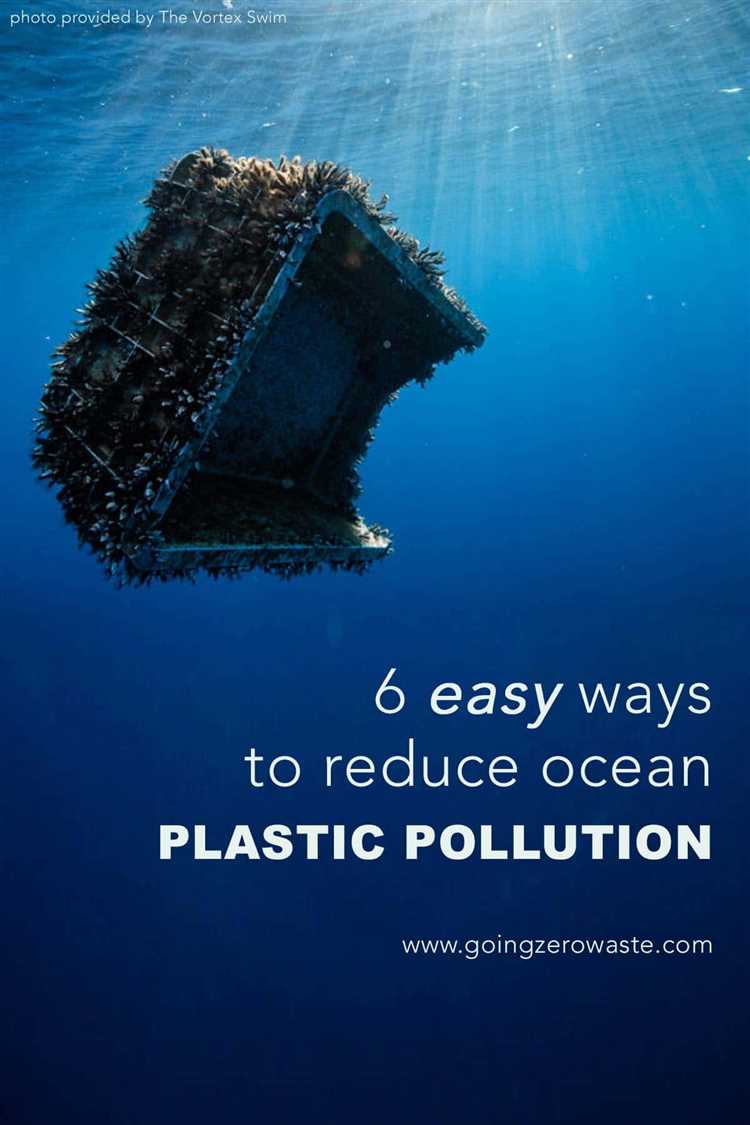
Plastic pollution has become a global crisis, with devastating effects on the environment and human health. Every year, millions of tons of plastic waste end up in our oceans, rivers, and landfills, causing irreversible damage to ecosystems and wildlife. To tackle this urgent issue, it is crucial to implement effective solutions that reduce plastic waste and promote sustainable alternatives.
One of the most effective ways to combat plastic pollution is by reducing the production and consumption of single-use plastics. These items, such as plastic bags, straws, and water bottles, are used once and then discarded, contributing significantly to the plastic waste problem. By encouraging individuals and businesses to switch to reusable alternatives, such as cloth bags, metal straws, and glass bottles, we can significantly reduce the amount of plastic waste that enters our environment.
In addition to reducing single-use plastics, recycling plays a vital role in ending plastic pollution. Recycling allows us to turn plastic waste into new products, reducing the need for virgin plastic production. However, it is essential to ensure proper waste management systems and educate the public about the importance of recycling. By implementing comprehensive recycling programs and making recycling more accessible and convenient, we can increase recycling rates and reduce the amount of plastic waste that ends up in landfills or pollutes our natural surroundings.
Furthermore, promoting innovation and sustainable design is crucial in finding long-term solutions to plastic pollution. With advancements in technology, researchers and businesses are working on developing biodegradable plastics, plant-based alternatives, and more efficient recycling methods. By supporting these innovations and encouraging the use of sustainable materials, we can reduce our reliance on traditional plastics and minimize their impact on the environment.
Ending plastic pollution is a complex challenge that requires a multi-faceted approach. By combining efforts to reduce single-use plastics, increase recycling rates, and promote sustainable alternatives, we can make a significant difference in preserving our planet for future generations. It is time for individuals, businesses, and governments to come together and take action to protect our environment from the devastating effects of plastic pollution.
- Effective Solutions to Reduce Plastic Waste: Ways to End Plastic Pollution
- 1. Reduce Plastic Consumption
- 2. Recycle and Properly Dispose of Plastic Waste
- 3. Promote Sustainable Packaging
- Sustainable Packaging Innovations
- Biodegradable Materials
- Reusable Packaging
- Recycling and Waste Management Strategies
- 1. Improve Recycling Infrastructure
- 2. Promote Extended Producer Responsibility
- 3. Encourage Individual Recycling Practices
- Consumer Education and Awareness
- Understanding the Impact
- Alternatives and Sustainable Practices
- Government Policies and Regulations
- Plastic Bans and Restrictions
- Polluter Pays Principle
- Alternative Materials and Bioplastics
- Alternative Materials
- Bioplastics
- Global Collaboration and Initiatives
- The United Nations Environment Programme
- The Ellen MacArthur Foundation
- Question-answer:
- Why is plastic pollution a problem?
- What are the main sources of plastic pollution?
- How can individuals reduce plastic waste?
- What are some effective solutions to reduce plastic pollution on a larger scale?
- What are the long-term consequences of plastic pollution if left unaddressed?
- What are some effective solutions to reduce plastic waste?
- How can we encourage companies to adopt sustainable packaging practices?
Effective Solutions to Reduce Plastic Waste: Ways to End Plastic Pollution
Plastic pollution has become a global environmental crisis, but there are effective solutions that can help reduce and ultimately end this problem. Here are some of the ways we can tackle plastic waste:
1. Reduce Plastic Consumption
One of the most effective ways to combat plastic pollution is by reducing our overall consumption of plastic products. This can be achieved by opting for reusable alternatives like cloth bags instead of plastic ones, using a refillable water bottle instead of single-use plastic bottles, and choosing products with minimal plastic packaging.
2. Recycle and Properly Dispose of Plastic Waste

Recycling is an important part of reducing plastic pollution, but it’s crucial to ensure that plastic items are properly sorted and recycled. Separating different types of plastic and following local recycling guidelines can help ensure that as much plastic waste as possible is diverted from landfills and reused.
3. Promote Sustainable Packaging
Companies can play a significant role in reducing plastic waste by adopting sustainable packaging practices. Using eco-friendly materials for packaging, such as biodegradable or compostable alternatives, can help reduce the amount of plastic waste generated from products.
4. Raise Awareness and Support Policy Changes
Increasing public awareness about the impacts of plastic pollution and advocating for policy changes can also make a difference. By educating others about the environmental consequences of plastic waste and supporting legislation that promotes sustainable practices, we can create a collective effort to end plastic pollution.
By implementing these solutions, we can make a significant impact in reducing plastic waste and working towards a cleaner and healthier environment for future generations.
Sustainable Packaging Innovations
Sustainable packaging innovations play a crucial role in reducing plastic waste and finding alternative solutions for packaging products. With the increasing awareness of the environmental impact of plastic, companies and organizations are actively seeking sustainable packaging options. These innovations aim to minimize plastic use, promote recyclability, and utilize materials that have a lower environmental footprint.
Biodegradable Materials
One of the most promising sustainable packaging innovations is the use of biodegradable materials. Biodegradable packaging is designed to break down naturally and become part of the environment without causing harm. Materials such as compostable biopolymers, starch-based plastics, and plant-based fibers are being used to create packaging that can be easily decomposed through microbial action. Biodegradable packaging offers a viable alternative to traditional plastics and can significantly reduce the accumulation of plastic waste in landfills and oceans.
Reusable Packaging
Another innovative solution is the concept of reusable packaging. Instead of single-use plastic packaging, reusable packaging can be used multiple times, reducing the overall demand for plastic. This can be achieved through various methods, such as refillable containers, returnable packaging systems, or the use of durable materials that can withstand multiple uses. Reusable packaging not only reduces plastic waste but also encourages a more sustainable and circular economy.
In conclusion, sustainable packaging innovations are crucial in reducing plastic pollution. By adopting biodegradable materials and embracing reusable packaging solutions, we can significantly reduce our reliance on plastic and contribute to a cleaner and healthier environment.
Recycling and Waste Management Strategies
Recycling and waste management are essential strategies in tackling plastic pollution. By implementing effective recycling programs, we can divert plastic waste from entering landfills and oceans, while also conserving resources and reducing greenhouse gas emissions.
1. Improve Recycling Infrastructure
One of the key strategies to increase plastic recycling rates is to improve recycling infrastructure. This includes expanding and modernizing recycling facilities, ensuring efficient collection and sorting methods, and promoting education and awareness about recycling among communities.
Investing in advanced recycling technologies, such as chemical recycling and pyrolysis, can also help to recycle a wider range of plastics, including those that are traditionally difficult to recycle, such as multilayer packaging and mixed plastics.
2. Promote Extended Producer Responsibility

Extended Producer Responsibility (EPR) is a policy approach that holds manufacturers accountable for the entire lifecycle of their products, including their disposal and recycling. By implementing EPR programs, manufacturers are incentivized to design products that are easier to recycle and reduce the amount of plastic waste generated.
EPR programs can also help to create a more circular economy by encouraging manufacturers to use recycled materials in their products, thereby reducing the demand for virgin plastics.
3. Encourage Individual Recycling Practices

Individual recycling practices play a crucial role in reducing plastic waste. Governments and organizations can promote and encourage individuals to recycle by providing convenient recycling bins, developing clear recycling guidelines, and raising awareness about the importance of recycling.
Furthermore, initiatives such as deposit return schemes, where consumers receive a monetary incentive for returning plastic bottles, can significantly increase recycling rates and reduce littering.
Overall, implementing effective recycling and waste management strategies is vital in reducing plastic pollution. By improving infrastructure, promoting extended producer responsibility, and encouraging individual recycling practices, we can move towards a more sustainable and environmentally friendly approach to plastic waste.
Consumer Education and Awareness
Consumer education and awareness play a crucial role in combating plastic pollution. By providing individuals with the necessary information and knowledge, they can make informed choices and take action to reduce plastic waste.
Understanding the Impact
One of the key aspects of consumer education is helping people understand the impact of plastic pollution on the environment and human health. Many individuals may not be aware of the long-lasting effects of plastic waste or how it ends up in our oceans and ecosystems. By educating consumers about the harmful consequences, they can develop a greater sense of responsibility and urgency to address the issue.
Alternatives and Sustainable Practices
Consumer education can also focus on providing information about alternatives to single-use plastics and promoting sustainable practices. This can include highlighting reusable options such as cloth bags, stainless steel water bottles, and glass containers. Additionally, educating consumers on proper recycling techniques and encouraging them to support businesses and brands that prioritize sustainability can make a significant difference.
Furthermore, consumer education can also extend to raising awareness about the importance of reducing overall consumption. By promoting conscious consumerism and encouraging individuals to buy only what they need, unnecessary plastic waste can be minimized.
In conclusion, consumer education and awareness are critical in the fight against plastic pollution. By arming individuals with information and promoting sustainable practices, we can empower consumers to make environmentally responsible choices and contribute to a cleaner and healthier planet.
Government Policies and Regulations
Government policies and regulations play a crucial role in addressing plastic pollution and reducing plastic waste. By implementing effective policies and regulations, governments can encourage individuals, businesses, and industries to adopt sustainable practices and reduce their reliance on plastic.
Plastic Bans and Restrictions
One common approach taken by governments is to implement plastic bans and restrictions. This can involve banning certain single-use plastic items, such as plastic bags, straws, and utensils. By prohibiting the use of these items, governments aim to reduce the amount of plastic waste entering landfills and waterways.
In addition to outright bans, governments may also impose restrictions on the production and distribution of plastic products. This can include placing limits on the amount of plastic packaging that can be used, or requiring manufacturers to use more environmentally friendly alternatives.
Polluter Pays Principle
The polluter pays principle is another important policy tool used by governments to address plastic pollution. This principle places the responsibility on the producers and users of plastic products to cover the costs associated with their waste management and recycling.
By implementing taxes or fees on plastic products, governments can incentivize individuals and businesses to reduce their consumption and take responsibility for the waste they generate. These funds can then be used to support recycling programs, invest in sustainable alternatives, and clean up plastic pollution.
| Country/Region | Policies/Regulations |
|---|---|
| European Union | Banning single-use plastic items by 2021 |
| Canada | Plastic ban on microbeads in toiletries |
| India | Plastic Waste Management Rules 2016 |
| Kenya | Banning plastic bags |
| California, USA | Banning single-use plastic bags |
These are just a few examples of the many government policies and regulations being implemented around the world to address plastic pollution. It is clear that there is a growing recognition of the need to take action and reduce our dependence on plastic.
By implementing effective policies and regulations, governments have the power to drive meaningful change and create a more sustainable future. However, it is important for individuals to also play their part and make conscious choices to reduce the use of plastic in their daily lives.
Alternative Materials and Bioplastics
One effective solution to reducing plastic waste is by promoting the use of alternative materials and bioplastics. These materials are designed to be more environmentally friendly and have a lower impact on our planet.
Alternative Materials

There are several alternative materials that can be used as substitutes for traditional plastics. One example is paper, which can be used to create bags and packaging instead of plastic. Paper is biodegradable and can be recycled multiple times, making it a sustainable option.
Another alternative material is glass. Glass bottles and containers can be reused or recycled, reducing the need for single-use plastic bottles. Glass is also inert, meaning it does not leach harmful chemicals into the environment.
Other alternatives include metal, such as aluminum cans, and natural fibers like bamboo or hemp. These materials can be used for various products, including utensils, straws, and cloth bags.
Bioplastics
Bioplastics are another innovative solution to the plastic pollution problem. Unlike traditional plastics, which are made from fossil fuels, bioplastics are made from renewable resources such as plants, cornstarch, or algae.
One type of bioplastic is polylactic acid (PLA), which is made from fermented plant sugars and is commonly used for packaging. PLA is biodegradable under certain conditions and has a lower carbon footprint than traditional plastics.
Another type of bioplastic is polyhydroxyalkanoates (PHAs), which are produced by bacteria that feed on plant sugars. PHAs are biodegradable and can be used for various applications, including packaging, disposable cutlery, and even 3D printing.
While bioplastics offer a more sustainable alternative to traditional plastics, it’s important to note that they still have limitations. Some bioplastics require specific composting conditions to degrade, and not all bioplastics are recyclable. Therefore, proper disposal and waste management systems are crucial when using bioplastics.
Overall, alternative materials and bioplastics present promising solutions to reduce plastic waste. By promoting their use and investing in research and development, we can move towards a more sustainable future with less dependence on single-use plastics.
Global Collaboration and Initiatives
Plastic pollution is a global problem that requires a collaborative effort from governments, organizations, businesses, and individuals worldwide. In recent years, there have been various initiatives and collaborations aimed at reducing plastic waste and finding effective solutions:
The United Nations Environment Programme
The United Nations (UN) has been actively involved in addressing plastic pollution through its Environment Programme. It launched the Clean Seas campaign, which aims to engage governments, businesses, and citizens in taking action to reduce plastic pollution. The campaign encourages countries to implement policies to reduce single-use plastics and promotes the adoption of sustainable alternatives.
The Ellen MacArthur Foundation
The Ellen MacArthur Foundation is an organization dedicated to accelerating the transition to a circular economy. They have launched the New Plastics Economy Global Commitment, which brings together businesses, governments, and other stakeholders to commit to reducing plastic waste. The initiative aims to eliminate unnecessary plastic packaging, innovate towards reusable and recyclable materials, and promote a more circular economy for plastics.
Other Global Initiatives:
- The Plastic Disclosure Project: Encourages businesses to measure, manage, and disclose their plastic usage and waste.
- The Ocean Cleanup: Develops technologies to remove plastic pollution from the world’s oceans.
- Plastic Bank: Creates incentives for people in developing countries to collect and recycle plastic waste.
- The Plastic Soup Foundation: Works to prevent plastic pollution and raise awareness about its environmental impact.
These global collaborations and initiatives play a crucial role in raising awareness, implementing policies, promoting innovation, and encouraging responsible consumption and production practices to reduce plastic waste. By working together on a global scale, we can make significant progress in ending plastic pollution and protecting our planet for future generations.
Question-answer:
Why is plastic pollution a problem?
Plastic pollution is a problem because it poses a threat to the environment, wildlife, and human health. Plastic waste takes hundreds or even thousands of years to decompose, and during this time, it releases harmful chemicals into the soil and water. Animals often mistake plastic for food and can become tangled in it, leading to injury or death. Plastic pollution also affects humans, as chemicals from plastic can leach into food and water sources, potentially causing health problems.
What are the main sources of plastic pollution?
The main sources of plastic pollution include single-use plastics, such as plastic bags, bottles, and straws. Other sources include microplastics, which are tiny particles of plastic found in personal care products, synthetic clothing, and industrial processes. Plastic waste from fishing activities and improper waste management also contribute to plastic pollution.
How can individuals reduce plastic waste?
There are several ways individuals can reduce plastic waste. Firstly, they can use reusable bags, bottles, and straws instead of single-use plastics. It’s also important to properly dispose of plastic waste and recycle whenever possible. Avoiding products with excessive packaging and choosing products made from sustainable materials can also make a difference. Additionally, supporting initiatives that promote a circular economy and raising awareness about the issue can help drive change.
What are some effective solutions to reduce plastic pollution on a larger scale?
On a larger scale, reducing plastic pollution requires cooperation from governments, businesses, and communities. Implementing plastic waste reduction policies, such as bans or taxes on single-use plastics, can be effective. Encouraging the development and use of biodegradable or eco-friendly alternatives to plastic is also important. Investing in infrastructure for proper waste management, including recycling facilities and composting systems, is crucial. Collaboration between different sectors is needed to address the issue comprehensively.
What are the long-term consequences of plastic pollution if left unaddressed?
If left unaddressed, plastic pollution will continue to degrade the environment and pose risks to wildlife and human health. The accumulation of plastic in ecosystems can disrupt natural processes and harm biodiversity. It can also contaminate water sources and enter the food chain, potentially causing health problems for humans. Furthermore, the production and disposal of plastic contribute to greenhouse gas emissions and exacerbate climate change. It is important to take action now to prevent further damage.
What are some effective solutions to reduce plastic waste?
There are several effective solutions to reduce plastic waste. Firstly, we need to focus on reducing the use of single-use plastics, such as plastic bags and straws. This can be achieved by promoting reusable alternatives and implementing plastic bag bans. Secondly, recycling plays a crucial role in reducing plastic waste. It is essential to improve recycling infrastructure and promote recycling education. Additionally, companies should be encouraged to adopt sustainable packaging practices and create products with less plastic. Lastly, raising awareness and educating the public about the consequences of plastic pollution can bring about behavioral changes and evoke more responsible consumption habits.
How can we encourage companies to adopt sustainable packaging practices?
Encouraging companies to adopt sustainable packaging practices can be done through various approaches. Firstly, governments can implement stricter regulations and policies regarding packaging material choices and require companies to use more eco-friendly alternatives. These regulations can include incentives for companies that use sustainable packaging and penalties for those who do not comply. Additionally, consumer demand plays a crucial role in influencing companies. By supporting and promoting products with sustainable packaging, consumers can send a strong message to companies about their preferences. Collaboration between businesses and non-profit organizations can also lead to the development of innovative packaging solutions and initiatives. Lastly, companies should be educated about the long-term benefits of sustainable packaging, such as cost savings and enhanced brand reputation.